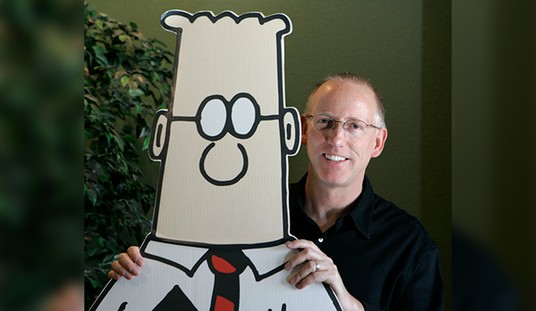Two planets in our galaxy are inhabited. One is Earth, where humans have made a mess of things for quite a few centuries. The other is Mars, which is totally inhabited by robots, driving, drilling, listening, sampling their way around that sandy wasteland.
For reasons that escape some flat-earthers, abundant curiosity exists about the Red Planet that’s only half the size of Earth. The desolation on Mars, they believe, might shed light on the origins of life on Earth. Of course, exploring the desolation of Arizona would be a lot cheaper.
But there are new indications that humans — at least the American kind — are entering one of their irregular cycles of restless curiosity about space and the lethal mysteries that lurk there. We had one back in the 1960s, which President Kennedy harnessed to become the first nation to land people on the Moon.
Now, a new Gallup poll has just discovered that for the very first time a majority of Americans favor sending a manned or womaned mission out there to explore Mars. Today, it’s 53 percent go for it and 46 percent nah.
That’s actually quite a change in just 20 years when a majority of Americans said, Forget about it.
Back in 1969 during the glory days of the U.S. space program after the first two astronauts had just walked on the Moon and successfully returned, only 39 percent told Gallup they favored sending astronauts to Mars while 53 percent opposed the idea.
And here’s an interesting twist: Going to Mars is a bipartisan deal, with both Republicans and Democrats equally positive on the idea (55 percent) and 53 percent of independents also in favor. Support for such a mission is greatest among the young and least among senior citizens, although they’ve been coming around.
The focus in recent decades has been sending unmanned robots to pass by or orbit different planets or moons and in some amazing cases landing them on Mars to drive around and explore that place.
Studying the effects on human bodies of prolonged weightlessness in near Earth orbits involved the International Space Station, flying around the Earth 16 times a day at 17,500 miles an hour and 270 miles altitude.
Of course, U.S., Russian and European astronauts each spend only a few months there. That’s roughly equivalent to a one-way trip to Mars, which varies from 34 million to 250 million miles distant away from Earth.
In his July 4th remarks last week President Trump said, “We’re going to be back on the Moon…and, someday soon, we will plant the American flag on Mars.”
The president has been reported impatient at the time it’s taking NASA to prepare for a manned return to the Moon. Apollo 17, the last such mission launched in December, 1972 and took the 11th and 12th men to walk there.
These plans inevitably slip, but NASA currently plans to return Americans to the Moon surface by the end of Donald Trump’s second term. (Just checking to see if you’re still reading.)
One major inhibiting factor to expanded manned space exploration has been concerns about the costs. But the latest Gallup survey found all age groups have similar views, with 62% to 65% agreeing the costs are justifiable.
Back in 1999 only half of Americans surveyed could name Neil Armstrong as the first man on the Moon. Today, that’s increased to 66 percent. But a quarter of respondents still have no clue.








Join the conversation as a VIP Member